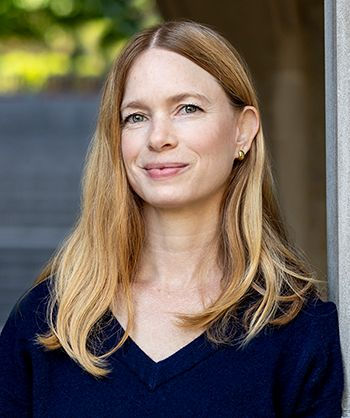

Associate Professor, East Asian Art History
Departmental Chairperson

Devlin Hall 434B
Telephone: 617-552-6476
Email: aurelia.campbell@bc.edu
Aurelia Campbell’s research centers on architecture and material culture from the Yuan, Ming, and Qing dynasties (1279-1911) in China. She is interested in issues concerning materials and technologies, sacred objects and spaces, and the relationship between the imperial court and outlying regions.
Her first book, What the Emperor Built: Architecture and Empire in the Early Ming (University of Washington Press, 2020), examines the building projects of the famous Yongle emperor to consider how imperial ideology takes shape in built space. It was awarded the Bei Shan Tang Monograph Prize (most outstanding and innovative monograph on Chinese art history) from the Association for Asian Studies in 2023 and the honorable mention for the Alice Davis Hitchcock Book Award (most distinguished work of scholarship in the history of architecture) from the Society of Architectural Historians in 2022. Her second book, In Death as in Life: A Material History of Ming Dynasty Tombs (in progress), moves away from the imperial, monumental, and expansive and towards sites of much more intimate scale: individuals’ tombs. Focusing on the Ming dynasty, the book examines new approaches to tomb space, grave goods, and the treatment of the body in light of contemporaneous social and economic developments.
She has engaged in several projects that help to advance the field of Chinese architectural history. This includes compiling three annotated bibliographies for Oxford Bibliographies on the subjects of Palace Architecture in Premodern China, Buddhist Architecture in Imperial China, and Architecture of the Ming and Qing Dynasties. Since 2018 she has also been involved in an international collaboration to create an English dictionary of traditional Chinese architectural terminology.
Her research has been supported through grants and fellowships from the Millard Meiss Publication Fund, James Geiss Foundation, Asian Cultural Council, Association for Asian Studies, and Metropolitan Center for Far Eastern Art Studies, among others. She has held visiting research positions at Peking University in Beijing (2009-2010) and the Max Planck Institute for the History of Science in Berlin (2016-2017). Since 2022, she has served as the Visual Arts Editor for the journal Religion and the Arts. She is a 2025-2026 George A. and Eliza Gardner Howard Foundation Fellow.